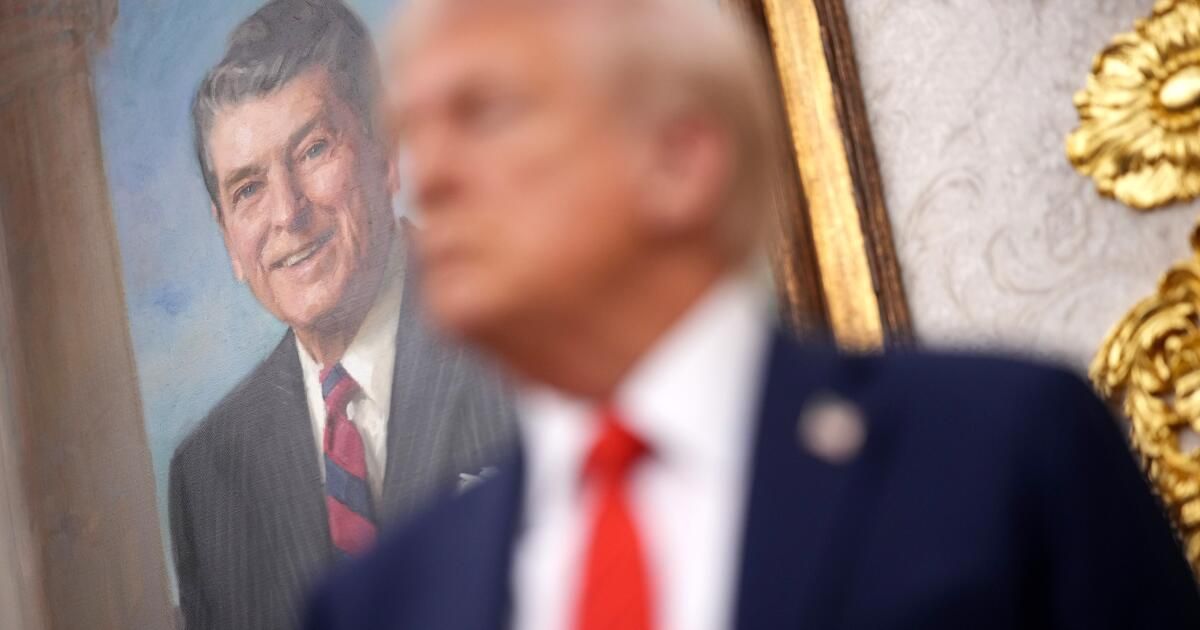In 1980, when President Reagan took office, the US public debt reached more than $712 billion (about $2.8 trillion in 2025 dollars), or about 25% of annual US GDP. Today, that figure is a little more than $30 trillion, or about 100% of GDP. And as the federal debt grew 42 times over that span, the economy only grew tenfold. You cannot expand the numerator four times as fast as the denominator for 45 years without financial peril.
That's where we find ourselves. The United States is at peace and, despite President Trump's claims, there is no national emergency. And yet, we have only seen debt as a higher proportion of GDP during the years 1945, 1946, 2020 and 2021. So, Republicans and Democrats knew how to reduce it. Now, debt explodes during emergencies and continues to grow in peacetime.
In 1946, after World War II, the debt-to-GDP ratio was 106%. It decreased to only 25% in 1980, not only due to inflation and economic growth but also true fiscal discipline. With budgets nearly balanced, the fruits of a booming private sector could actually reduce the burden. Beginning in the Reagan era, discipline gave way to a new normal of chronic budget deficits.
Three forces made the change possible:
Firstly, and the main cause of the mess we find ourselves in, is that the rule of rights became enormous, yet untouchable. Social Security reforms of 1983 are a rare example of bipartisan structural reform of a major entitlement program in American history. Since then, despite economic and social changes, the program has never been reformed. It doesn't matter what you face insolvency and the possibility of automatic benefit cuts of more than 20% in 2033. The same applies to our other major debt driver: Medicare. And Medicaid is growing far beyond its original intent.
Democrats, occasionally aided by Republicans, have worked to expand welfare programs aimed at low-income people to those at increasingly higher levels. The most recent and extreme example is the COVID-era expansion of the Obamacare tax credit to the wealthiest taxpayers, a significant portion of whom enjoy early retirement. The fight for its continuation is what It's about the government shutdown.
Second, Republicans discovered that promising tax cuts without offsetting spending cuts was politically painless as long as they were claimed to “pay for themselves.” There is a rare recent exception: this year's “One Big Beautiful Bill,” which included $1.5 trillion in spending reductions over 10 years to offset some of the tax cuts. It's not enough, but it's something. Meanwhile, Democrats love to claim that debt wouldn't be a problem if the rich paid their “fair share.” They already pay a huge amount of taxes. But the numbers still don't add
Finally, the Federal Reserve, under Chairman Alan Greenspan in 1987, learned to numb the political pain of budget deficits by keeping interest rates artificially low and monetizing debt. Politicians concluded that they could go into debt endlessly without suffering political consequences. The problem is that this only works to the extent that investors do not fear being paid in inflated dollars.
That illusion has faded. Interest costs have arose from $372 billion annually just a few years ago to nearly $1 trillion today, surpassing what we spend on defense or Medicaid. Within a decade, annual interest payments are expected to nearly double, reaching $1.8 trillion. Even without new programs, the built-in deficit would continue to rise and outpace economic growth. And Washington continues to add more deficit spending.
This decade's bipartisan binge has debt on its way 166% of GDP by 2054. I don't think we will get to that point, because inflation will break out and stabilize the debt. That would destabilize the country and inflict enormous amounts of pain and loss of purchasing power. So my point remains this: politicians on the left and right see that the debt is exploding and do nothing.
The current politics of this crisis are as bipartisan as its origins. Democrats defend all rights and come up with new benefits. Republicans demand more defense spending and even more tax cuts. Both claim that faster growth will somehow erase the arithmetic, but growth alone cannot close such a large structural gap.
Even sustained real annual growth of 3% (a questionable assumption given the implications of population aging and immigration crackdowns) would produce about $4.4 trillion in additional revenue over a decade, while total deficits would rise to $21.7 trillion.
Don't be fooled: the debt explosion is not driven by waste, fraud or foreign aid. Nor is it the result of a lack of income. It is the direct result of reckless promises to retirees, the cost of health care, and an unwillingness to pay bills honestly. For most of American history, debt decreased as wars ended and peace returned. Since 1980 we have achieved the opposite: peace without prudence and prosperity without restrictions.
Rugy Veronica He is a senior fellow at the Mercatus Center at George Mason University. This article was produced in collaboration with Creators Syndicate.












